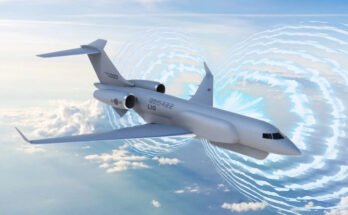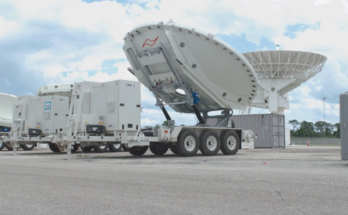by C. Zachary Hofer, Electronic Systems Analyst, Forecast International.

In a March 22 teleconference call, Lt. Gen. David Mann of the U.S. Army’s Space and Missile Defense Command said that the service is looking to satisfy requests from field commanders while retaining enough Terminal High-Altitude Area Defense (THAAD) batteries and associated TPY-2 radars at home. He revealed that the Army will have five THAAD systems (inclusive of the radars) fielded and ready for operation by the end of the year, and will have two more funded in a midterm program. The end goal is nine total batteries.
A key area will be in the Asian region, where countries that the U.S. would prefer to keep happy may be disturbed by having missile defense radars aimed at them. Lt. Gen. Mann said, “I think it’s very, very important that we clarify that that radar, that system is not looking at China. That system, if a decision is made to deploy it, would be oriented on North Korea and threats posed by the North Korean military.” In February, the U.S. and South Korea announced that the two countries would look into the possibility of stationing a THAAD battery in South Korea.
Raytheon produces the THAAD’s TPY-2 X-band radar, which can be deployed in two modes: forward-based mode and terminal mode. In forward-based mode, the radar is deployed near hostile territory and acquires a ballistic missile target in the boost phase. It then tracks the target and disseminates information to key personnel in the Command and Control Battle Management network. In terminal mode, the radar detects, acquires, tracks, and discriminates ballistic missile targets in the terminal (descent) phase.
Raytheon says that 10 of the THAAD’s TPY-2 radars have been produced to date, two radars per THAAD system. Meanwhile, the U.S. Army touts the TPY-2 as the largest air-transportable X-band radar in the world. Its size and power allow THAAD missile batteries to track, target, and destroy ballistic missile threats both inside and outside Earth’s atmosphere.
Please feel free to use this content with Forecast International and analyst attributions, along with a link to the article. Contact Ray Peterson at +1 (203) 426-0800 or via email at ray.peterson@forecast1.com for additional analysis.
FI’s eight Electronic Systems Market Intelligence Services cover the full range of defense-related systems and programs in the radar, communications, electro-optical, and electronic warfare markets, presenting a comprehensive market outlook for current equipment as well as new systems being developed as the modern battlefield moves toward a technology-based warfare approach with network-centric capabilities.
For 50 years, Forecast International intelligence reports have been the aerospace and defense industry standard for accurate research, analysis, and projections. Our experienced analysts compile, evaluate, and present accurate data for decision makers. FI's market research reports offer concise analysis of individual programs and identify market opportunities. Each report includes a program overview, detailed statistics, recent developments and a competitive analysis, culminating in production forecasts spanning 10 or 15 years. Let our market intelligence reports be a key part of reducing uncertainties and mastering your specific market and its growth potential. Find out more at www.forecastinternational.com




